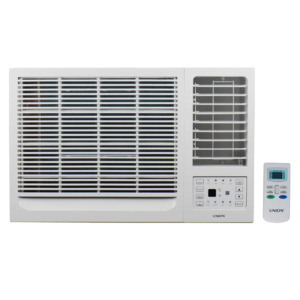Septic tanks that are not pumped often become full of solid waste. These solids sink to the bottom of the tank and accumulate as a layer of sludge, while grease and lighter materials float to the top. Wastewater flows from the septic tank through perforated pipes into the drain field where soil microbes remediate it. Click the Septic Tank Pump Out Perth to learn more.
When you flush the toilet, wash your clothes or dishes, take a shower or do any other activities in your home that produce wastewater, it enters the sewer line which slopes toward your septic tank. Your septic system is designed to treat this wastewater before it returns to the environment. All of the plumbing in your home connects to this sewer line and then flows into your septic tank.

A septic tank is made up of three important layers. The most important is the water layer on top of which floats the all-important wastewater. The next layer is sludge, which includes heavy solid materials such as feces. Finally, the scum layer includes fats, oils and greases that float on top of the water.
Over time these solids settle and separate from the water. Microorganisms living in your septic tank break these down into even smaller particles that dissolve and release gases. These gases, including hydrogen sulfide, are released through a vent in your septic tank lid. The anaerobic bacteria in your septic tank then breaks down the rest of the contaminants, leaving behind only clean wastewater that is returned to the soil absorption field.
If you notice sewage backups in your home or yard, this is a sign that it’s time to get your septic tank pumped. The more solids that are in the septic tank, the sooner it will need to be pumped.
Your septic tank is located underground and is usually out of sight. Most septic tanks have baffles that divide the tank into sections. Each section has its own inspection port and a larger manhole cover for pumping. The septic tank itself is typically made of concrete, although newer models are now available that are also plastic or polyethylene.
When you call to schedule your septic tank pump out, the technician will listen to your septic system and use a muckrake to remove the waste from the tank. They will also check the level of sludge and scum, as well as inspect the baffles and other components of your septic system for any damage or problems.
Septic Tank Maintenance
Septic tank problems are like any other plumbing issue – they can become expensive, stressful and damaging to your home if not handled quickly. Catching septic tank issues before they turn into serious repairs can save homeowners thousands. Regular septic tank pumping and inspections are essential for the health of your septic system.
If you’re unsure when your septic tank was last pumped, or you’ve never had it pumped before, the recommendation is to have it done soon. This will help avoid septic tank failure, and it will also allow for a more accurate assessment of your septic system’s current health.
During your septic tank pumping appointment, the technician will first need to uncover the tank access lids and the septic tank pipes. They will use a high-powered hose to suck all of the liquids and solid waste out of your septic tank. Depending on your home’s septic tank size and condition, this may take more than one visit to complete. Once the waste is removed, the technician will check for any signs of septic tank damage or issues with the distribution box, drain field and other components of your septic system.
Some early warning signs of septic tank issues include sluggish drains, sewer smells around the septic access points and standing water in or near your septic tank and distribution box. These symptoms can indicate that your septic tank is getting too full, or that there are baffle or distribution box issues.
You can prevent septic tank issues by reducing your home’s water usage, especially with low-flow toilets and showerheads. Performing routine septic tank cleaning and inspecting can also prolong the life of your septic tank, but it is not a substitute for regular septic tank pumping.
To avoid costly repairs, be sure to hire a licensed, professional company that offers septic tank services. They will have the proper equipment and knowledge to do the job properly and safely, and they will be able to recommend any upgrades or repairs that are needed. They should also carry insurance, workman’s compensation and environmental permits. You should also look for companies that have a local service area, so you can avoid additional travel costs and get faster responses.
Septic Tank Repair
A septic tank that hasn’t been pumped out in years can overflow, which poses health and environmental hazards. It’s not only messy and smelly, but the raw sewage can seep into the soil and waterways, contaminating ecosystems and putting public health at risk.
Keeping up with maintenance and pumping the tank regularly will reduce the chance of overflow and extend the life of the system, saving money on repairs and replacements. Identifying signs of overflow or a problem early, such as slow drains or gurgling sounds, and having the system inspected by an experienced professional will help prevent damage and save you costly repair bills.
The first step of the pumping process is to locate the septic tank, which may involve digging to expose the access ports. Once this is done, a technician will connect a powerful vacuum truck to the tanks and start sucking up waste layers of sludge, liquid, and scum. Depending on the size of the tank, this can take anywhere from 30-60 minutes.
During the pumping process, the technician may also examine the septic tank and drain field for signs of problems like cracks, leaks, or other damage. They will also note the amount of waste being pumped out and compare it to previous septic tank pumping results. This will give them an idea of the overall condition of the septic tank and the system as a whole, helping to predict future maintenance needs.
While some DIYers attempt to do their own septic tank pumping, it’s usually best left to professionals. A septic tank can be a dangerous place to work, containing toxic gases like methane and hydrogen sulfide that can knock you unconscious within minutes. The process requires specialized equipment and strict safety protocols, as well as proper waste disposal. Homeowners who try to handle septic tank pumping themselves risk water pollution, system damage, and unlicensed or illegal waste disposal, which can lead to fines and water contamination.
Regular septic tank pumping will keep the system working properly and safely, reducing repair costs and extending its lifespan. Maintaining a consistent schedule and following basic maintenance tips, such as spreading out water usage throughout the week and using water-saving appliances, can also reduce the amount of waste entering the tank and system. Avoiding harmful materials that can harm the bacteria in the septic tank and drain field, and limiting the use of non-biodegradable toilet paper and household cleaners, will help ensure that your septic tank stays at peak efficiency.
Septic Tank Installation
A septic tank system is a complex engineering design that relies on permeable soil to naturally absorb and treat liquid waste. In order to ensure that this crucial groundwater protection system works properly, homeowners should work with a professional contractor for installation. They will conduct a thorough site evaluation to determine the soil’s suitability for septic systems. This is a vital step in septic tank installation, as the type of soil has a significant impact on how quickly and completely wastewater is absorbed and filtered.
A skilled installer will also help you choose the right tank size based on household water usage. An undersized septic tank can lead to frequent overflows, while an oversized tank can be costly. An experienced installer will be familiar with local regulations and can ensure that the septic tank is designed in compliance with these requirements.
After the septic tank is installed, an experienced installer will connect it to the plumbing system. This involves installing inlet and outlet pipes, as well as distribution boxes. The installer will then install the drain field, which is an area of permeable soil that will effectively absorb and treat liquid waste. A quality drain field will ensure that the septic tank system does not leak contaminants into groundwater, which can pose serious health and environmental risks.
Once the septic tank is connected, the professional will test and inspect the entire system to ensure that it is working properly. This includes looking for signs of trouble, such as sluggish drains and sewer smells around access ports. These early warning signs can indicate that the septic tank is overflowing or experiencing other issues. A professional will also check the condition of the tank baffles and walls, as well as look for invasive roots that can cause damage or blockages.
When pumping day arrives, technicians will locate the septic tank and expose its lid. They will then connect a truck-mounted vacuum equipment to begin pulling out the solid waste, sludge, and scum. They will carefully remove all waste, and they will make note of your septic tank’s condition so that you can plan for future maintenance and repair needs. During the pumping process, technicians will use a muckrake to break up the sludge layer and floatable scum for easier removal. They will also thoroughly examine the drainage system, including the drain fields, to look for any early warning signs of problems.







